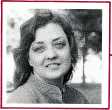 |
Home | Search | Browse | About IPO | Staff | Links |
 |
Home | Search | Browse | About IPO | Staff | Links |

The State of the State By DIANE ROSS The Furman Commission reports EQUITY. That's been the real tax issue since December 3, 1818 when the First General Assembly convened in Kaskkaskia to build the state's tax structure. Has Illinois had equity? Does Illinois have equity? Will Illinois have equity? Will any state? Or is equity just another pious hope of the American Dream, a hope that has been impossible to realize ever since the Sons of Liberty dumped all that tea in the Boston Harbor? Certainly equity was the real tax issue on January 12, 1983, when the Eighty-Third General Assembly convened in Springfield to rebuild the state's tax structure. In this case, the 26-member Tax Reform Commission named by Gov. James R. Thompson (which will probably go down in history as the Furman Commission, since it was headed by the MacArthur Foundation's Jim Furman) studied the question of equity for nine months in 1982 and made 20 recommendations. They include:
February 1983 | Illinois Issues | 4
What effect would the commission's recommendations have, if implemented by the General Assembly? Who knows? At this writing (late December) the questions can only be asked, not answered. What about tax relief? Who would pay more? Who would pay less? Would the rise in people's income taxes offset the drop in their property taxes? What about revenue? Would the state government get more in income tax revenue and sales tax revenue? Less? The same? What about local governments? Would what they get in income tax revenue make up for what they would lose in property tax revenue? Would what they gain in service tax revenue make up for what they lose in food and drug tax revenue? What about reform? Would the tax burden, overall, be greater? Smaller? The same? Would the tax burden shift from one kind of taxpayer to another? Would it be balanced more evenly on the backs of all? Cynics have predicted that the commission would simply follow Thompson's orders and that "reform" was just a nice way of saying "raise the income tax." But its not that simple. The commission's recommendations are far-reaching and may indeed lead to at least limited reform of the state's tax structure. The impetus for reform is certainly there — although it cuts every which way. Schools expect tax revenue. Business and labor expect to get a tax break. And all of them call it equity. Yet equity, that most elusive of government's goals, lies in the eyes of the beholder. "Don't tax you. Don't tax me. Tax the man behind the tree," quips Doug Whitley of the Taxpayers' Federation of Illinois, a member of the Tax Reform Commission. What did the cynics expect? An Eleventh Commandment? Furman and Company may have accepted Thompson's title of Tax Reform Commission, but they never made the mistake of calling reform "equity." Whitley and all the others are realists. They know that however great the expectations, the exigencies will always be greater. That's why the commission stuck to theory — defining the problem and suggesting a number of solutions — and left the practice to the legislature. Only the legislature has the power to raise or lower taxes; only the legislature can decide how to do it. If you raise the income tax, how high? What the commission recommended? Higher? Lower? How do you adjust the formula by which the state computes aid to schools? If you tax the professions and trades, which services do you tax? Which do you exempt? If you fully exempt food and drugs, do you do it all at once? Gradually? Furman and Company suffered no delusions of grandeur; they knew all along that the answers to these questions depend on politics. What will the General Assembly do? The General Assembly will do what it has always done — whatever's in the best interests of the majority party. And the majority party, this year and next, is the Chicago Democrats. The possibilities are endless — and unpredictable, considering the effect Chicago's elections will have on the tax deliberations in Springfield. □ February 1983 | Illinois Issues | 5 |
|
|